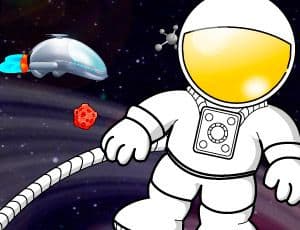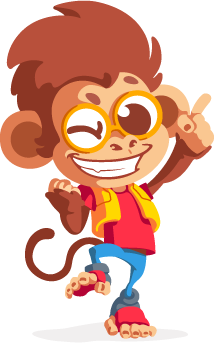Escola Games | Jogos Educativos
https://www.escolagames.com.br
Teacher's support sheet

Solar System
Come be the commander of the School Games spaceship and travel through the 8 planets of our Solar System: Mercury, Venus, Earth, Mars, Jupiter, Saturn, Uranus, and Neptune.
Be cautious and navigate the spaceship through the Solar System to learn more about each of the planets.

Tips for the Educator
We know that the Solar System is a broad topic, but it captivates students' curiosity.
From a very young age, children are eager to understand the mysteries of the Universe (how many stars are in the sky? Is the Sun very hot? Why does the moon appear larger at certain times of the month?). It is crucial for students to reflect on the vastness of space, discovering that our small planet is precious because it hosts the only known form of life, and to preserve it, understanding and knowledge are necessary.
In this game, you will lead children on a spaceship exploration of this incredible place. Allow students to ask questions, sparking their curiosity. If there is no initial participation from the students, ask questions to stimulate them. [FIM-DICA]
Objectives for the Student
Understand the Solar System. Name the planets that are part of the Solar System. Describe the composition and structure of the Solar System (Sun, rocky planets, gas giant planets, and smaller bodies), as well as the location of the Solar System in our Galaxy. Understand the characteristics of the planets in the Solar System, comparing them to Earth. Identify the planets in the solar system and their characteristics. Highlight the vastness and complexity of the universe. Develop observation, comparison, and classification skills. Reinforce knowledge acquired in the classroom.
Objectives for the Teacher
Encourage students to reflect on the care and preservation of our planet, as it is the only place in the Solar System capable of supporting life. Help students understand what the Solar System is, its formation, and other characteristics. Supplement the study of the Solar System by presenting additional sources to help students better understand the content. Work on motor skills (controlling the spaceship using the keyboard).
Teacher's Approach Suggestions
(Suggestion 1) The game can be proposed individually or in pairs. In the case of working in pairs, children should take turns commanding the spaceship.
During the game, give students a sheet to record key information about each planet. Encourage them to exchange ideas and choose the best way to record this information without simply copying from the screen. Use this record for other activities in the classroom.
(Suggestion 2) Propose a quiz with the following questions. You can also organize a "pass or fail" game by forming teams. Alternatively, use the questions for a "Solar System burst" game, placing a question in each balloon. Each student should burst a balloon and answer the corresponding question.
[Include quiz questions]
(Suggestion 3) Create models of the Solar System using styrofoam balls, gouache paint, glitter, and cardboard boxes.
[Include other suggestions]
Supplementing the Content
The solar system consists of the sun, planets, their satellites, and small bodies such as asteroids, comets, and meteors. All these celestial bodies are governed by the sun, or, to simplify, they orbit the sun.
The sun is the closest star to Earth.
The billions of other stars that make up the universe are so distant that we see them only at night as small points of light.
The 8 planets that are part of the solar system are Mercury, Venus, Earth, Mars, Jupiter, Saturn, Uranus, and Neptune. It's important to note that until August 2006, Pluto was considered the ninth planet, but since then, it has been classified as a dwarf planet.
The smaller and closer planets to the sun are composed of rocks and metals – Mercury, Venus, Earth, and Mars. The larger and more distant planets from the sun are gas giants – Jupiter, Saturn, Uranus, and Neptune. These are planets primarily formed by hydrogen and helium!
Except for Earth, all planets have names from Greek and Roman mythology.
